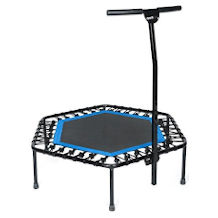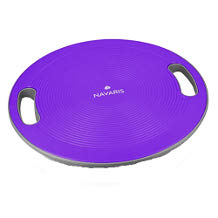Elliptical trainer purchasing advice: how to choose the right product
- What You Need to Know
- An elliptical trainer simulates a natural walking motion that varies in intensity depending on stride length and resistance.
- Due to the flat leg movements, the training is particularly easy on the joints and very suitable for rehabilitation measures.
- The stride length, the flywheel mass, the pedal spacing and the braking system have an effect on the training depending on the model.
- Regular training promotes endurance and muscle development as well as general fitness and health.
- For effective training, we recommend at least 25 minutes every two days. A day’s rest is particularly important for muscle recovery.
Fit with ellipticals
Exercise is a must for the human body: it not only promotes fitness, but also keeps you healthy. Especially in everyday working life, which demands a lot of sitting, it is important to move – be it a regular visit to the gym or an evening walk to end the day. However, exercising is not for everyone. Often people lack the motivation to go swimming or running. Fitness studios are very expensive in the long run and the opening hours are not always compatible with one’s own schedule. For others, team and ball sports are not a pleasant pastime.
In this case, it is advisable to turn your own four walls into a small gym that suits your needs. In addition to well-known equipment such as a treadmill, a fitness bike or a weight bench, more and more versatile fitness equipment is finding its way into private homes – for example, the elliptical trainer, which not only increases your endurance and burns fat, but also improves your posture and stimulates your circulation. Since the elliptical trainer “simulates” your normal walking behaviour, the movements are also made in a way that is gentle on the joints and natural. In a sense, it is a walk in your own home.
Even though the modern machines are more expensive than other fitness equipment and comparatively heavy, they are very low-maintenance and easy to use. Every age group will quickly get to grips with an elliptical trainer.
Pro points
- Increases general fitness
- Easy on joints thanks to natural movement
- Low maintenance
- Easy to use
Drawbacks
- Comparatively expensive
- Relatively heavy
What is an elliptical trainer?
An elliptical trainer is a fitness machine that you can use to train your endurance and burn fat. The machines are known from gyms, but there are also models for home use. Unlike exercise bikes, elliptical trainers do not have a seat; instead, there are two ski-like pedals on the sides that you set in motion via the flywheel on the front. The pedals are connected to a braking system that provides resistance. Two support bars on the sides offer you support and involve your arms in the workout. The device simulates a natural walking movement. Ankles and joints are spared, unlike with jogging, for example. This makes elliptical trainers particularly suitable for rehabilitation measures and people with joint problems.
What is the difference between an elliptical and a crosstrainer?
Crosstrainers and elliptical trainers belong to the same fitness equipment category; the terms are sometimes used synonymously and cannot be clearly distinguished from each other. Typically, however, models with a front-mounted flywheel are called elliptical trainers. On a crosstrainer, on the other hand, the flywheel is located at the rear. Since the user of a crosstrainer consequently stands above the flywheel, his steps are shorter and higher. The movements on an elliptical trainer, on the other hand, are longer and flatter and therefore easier on the joints; they are reminiscent of Nordic walking or cross-country skiing.
How does an elliptical trainer work?
You create the walking motion by rotating the pedals with your feet. The steps you take on the machine are long and flat. They therefore describe a kind of ellipse, which is where the name of the machine comes from. For a flowing movement, keep your feet on the pedals during the workout. You support this movement with your arms on the support bars. The crossed movement of the arms and legs simulates a normal walking motion.
What should I consider when buying an elliptical trainer?
When buying an elliptical trainer, you should pay particular attention to the technical features. The flywheel mass, stride length, pedal spacing and weight of use are important factors, and the choice depends partly on your body measurements. In addition, you should pay attention to the characteristics of the braking system and whether it is a magnetic or induction braking system. An on-board computer and appropriate accessories make training as pleasant as possible.

Flywheel mass
The flywheel mass refers to the weight in the flywheel and determines how smooth your movements are during exercise. Common elliptical trainers have a flywheel mass that weighs between 5 and 40 kilograms. The greater the weight, the smoother your movements on the machine. The flywheel mass of the exerciser should be at least 10 kilograms.
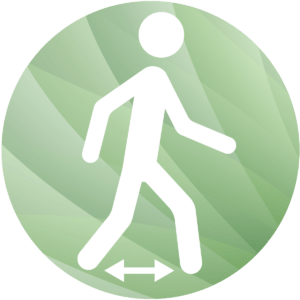
Stride length
The stride length indicates how long a stride is on the machine. Smaller users should choose a correspondingly small stride length. Taller people will feel more comfortable exercising with a longer stride length. If the machine is used by several users, you should base your purchase on the measurements of the tallest user or choose a model with an adjustable stride length.

Pedal spacing
Pedal spacing describes the internal distance between the two pedals. In bicycle technology, this is also referred to as the “Q-factor”, which determines the width of the stance. The width not only influences the comfort during training, but also how easy it is on the joints. If the distance is too large, the movement becomes unnatural. The pedal spacing should be around 10 to 15 centimetres.

Useful weight
The maximum usage weight of an elliptical trainer determines its extreme load limit. In most cases, the maximum load capacity is 120 kilograms; in some cases even up to 150 or 160 kilograms. Still other models are only permitted up to 100 kilograms. Make sure that the machine is suitable for your weight, otherwise it could be damaged.

Stability
An elliptical trainer should be particularly stable so that you can maintain body tension during exercise. The heavier the weight of the machine itself, the more stable it is. In addition, the individual parts should be well made. Make sure that the pedals are non-slip. Some elliptical trainer models are foldable so that they can be stored away to save space when not in use. These models are usually a little less stable.
Take it easy: the braking system
The braking system is needed to slow down the flywheel and thus create resistance. The resistance can be adjusted so that you can follow different training levels. Most machines are equipped with a magnetic braking system. However, there are also models with an induction braking system.
Magnetic brake system
This system is comparatively inexpensive and is the most commonly used by manufacturers. The built-in magnets brake the flywheel mass. You can adjust the strength of the magnets and thus the resistance on the machine. However, elliptical trainers with magnetic braking systems do not have as many resistance levels as models with induction braking systems. In addition, the resistance can only be adjusted in steps. However, the magnets work very quietly and have low wear and tear.
Pro points
- Very quiet
- Little wear and tear
- Inexpensive
Drawbacks
- Fewer resistance settings
- Gradual adjustments
Induction braking system
Elliptical trainers with induction braking systems are usually a little more expensive. However, they offer many resistance levels that you can select and adjust individually. This allows you to fine-tune your workout to suit your needs. The system is driven by an electric coil that you have to supply with electricity. Again, the brakes are very quiet and wear and tear is extremely low.
Pro points
- Very quiet
- Low wear
- Infinitely variable resistance settings
- Many individual training options
Drawbacks
- Comparatively expensive
- Depends on power supply
Intelligent training: the computer
The computer on an elliptical trainer allows you to make settings and keep track of your workout. Different models have on-board computers of varying complexity: while some have a simple overview with a few buttons and the most important data, the most modern elliptical trainers have computers with LCD displays and a variety of programmes. These make the training more varied by presetting various intervals or simulating walking situations in terms of angle and speed, for example hiking in the mountains.
Your pulse is also recorded by the training computer. Some models have hand sensors in the support bars that measure your pulse and transmit it to the device. Optionally, you can also purchase a chest strap separately. Wear it during your workout so that your pulse is measured. The belt must be compatible with the elliptical trainer so that your values can be transmitted to the computer.
Exercise with your smartphone and tablet
Make your workout as comfortable as possible with an extra feature or two. Many elliptical trainers have a holder for tablets or smartphones in addition to the classic water bottle holder. The manufacturers of some elliptical trainers also offer training apps for iOS and Android. If you connect your mobile device to the fitness equipment and use the app, you can run virtual trails or call up statistics.
Effective training
To make your workout as effective as possible, make sure you stand properly on the device: Place your feet with the entire sole on the pedals and make sure that contact is maintained with every movement. Angle your legs slightly to protect your joints; do not push your knees through. Keep the upper body upright and the back straight. Keep the hips straight, even during the exercise. Angle the arms as well so that the upper and lower arm are at a right angle and hold the bars loosely; do not let the hands cramp. Take the workout slowly and intensify the sessions over time.
Which muscle groups and body parts are trained?
Training with an elliptical trainer is beneficial for the entire body. You train the legs, especially the thighs, the buttocks, the abdomen, the chest and the back. Shoulders and arms are also trained, as you move them along with the support bars. In addition, an elliptical trainer is very good for burning fat, as a large muscle mass needs to be supplied with oxygen. The training is therefore particularly suitable for reducing your body weight. Last but not least, it gets your cardiovascular system going and lowers bad blood levels.
How often should I use an elliptical trainer?
For an effective workout, we recommend using it three to four times a week for about 25 minutes each time. Of course, you can also spend several hours on the machine, but beginners in particular should not overdo it to minimise the risk of injury. After a day of training, take a day off. This is important so that the body can regenerate. Muscles grow mainly during the resting phase, which is why the alternation between tension and regeneration is optimal. In this way, your body always remains efficient.
Training intensity and energy burn
With an elliptical trainer you can easily burn fat and carbohydrates. How intensively you should or can train depends on your personal fitness level. A heart rate monitor is useful to keep track of your fitness level.
| Duration | Intensity | Energy burn |
| Several hours | Very low | 95 percent fat, 5 percent carbohydrate |
| Several hours | Moderate | 90 percent fat, 10 percent carbohydrate |
| 20 to 30 minutes | Heavy | 50 percent fat, 50 percent carbohydrate |
| Several minutes | Very heavy | 10 per cent fat, 90 per cent carbohydrate |
| 30 to 60 seconds | Maximum | 100 percent carbohydrate |

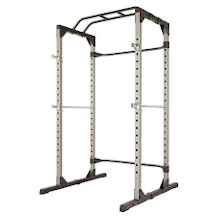
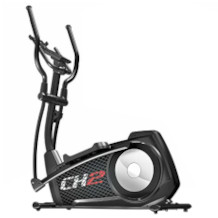
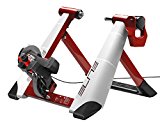
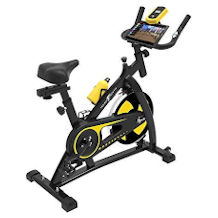







 30,803 reviews
30,803 reviews
